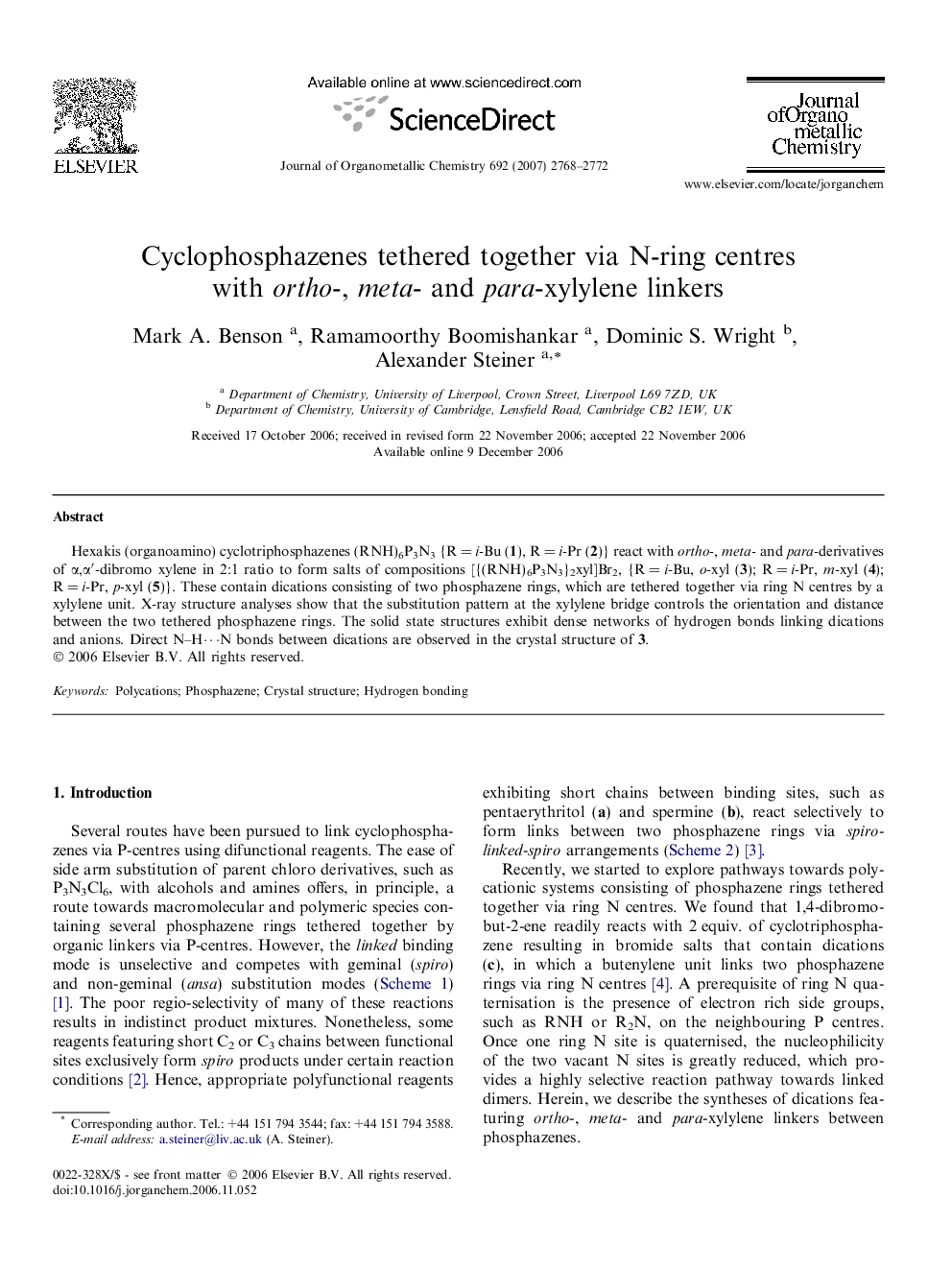| Article ID | Journal | Published Year | Pages | File Type |
|---|---|---|---|---|
| 1325181 | Journal of Organometallic Chemistry | 2007 | 5 Pages |
Hexakis (organoamino) cyclotriphosphazenes (RNH)6P3N3 {R = i-Bu (1), R = i-Pr (2)} react with ortho-, meta- and para-derivatives of α,α′-dibromo xylene in 2:1 ratio to form salts of compositions [{(RNH)6P3N3}2xyl]Br2, {R = i-Bu, o-xyl (3); R = i-Pr, m-xyl (4); R = i-Pr, p-xyl (5)}. These contain dications consisting of two phosphazene rings, which are tethered together via ring N centres by a xylylene unit. X-ray structure analyses show that the substitution pattern at the xylylene bridge controls the orientation and distance between the two tethered phosphazene rings. The solid state structures exhibit dense networks of hydrogen bonds linking dications and anions. Direct N–H⋯N bonds between dications are observed in the crystal structure of 3.
Graphical abstractCyclotriphosphazenes (RNH)6P3N3 react with ortho-, meta- and para-derivatives of α,α′-dibromo xylene in 2:1 ratio to form salts of compositions [{(RNH)6P3N3}2xyl]Br2. These contain dications consisting of two phosphazene rings, which are linked via ring N centres by a xylylene unit. This approach promises novel polycationic systems based on N-tethered phosphazenes.Figure optionsDownload full-size imageDownload as PowerPoint slide
